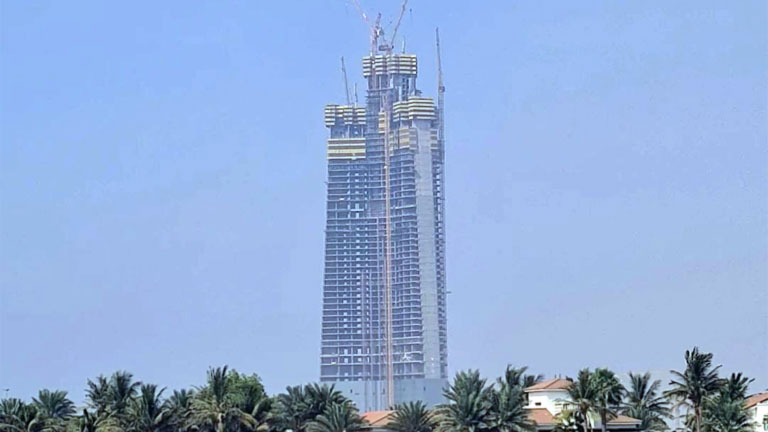Did you ever imagine how contractors and construction companies are building the biggest and tallest buildings in the world? Building the tallest building is not an easy task. A lot of work has to be done before starting the project. It includes design, architect planning, material, construction technology, and equipment.
Burj Khalifa, Shanghai Tower, Makkah Royal Clock Tower, Pang an International Finance Centre, and Lotte World Tower are the top five tallest buildings in the world. When you see them do you realize how are they made? Building a small building may be easy for contractors but they go up in the sky. They have to face a lot of challenges and difficulties which are short out in the planning work.
How 6 Innovative Technologies Enable the Construction of Super-Tall Skyscrapers?
The construction of the world’s tallest building requires a combination of innovative technologies and engineering expertise. The following six cutting-edge technologies that make it possible;
1. Sustainable Technologies
Sustainable technologies are innovations that aim to reduce the environmental impact of human activities and promote more efficient use of natural resources. This technology involves the use of natural or LED light, energy-efficient materials, solar power, rainwater harvesting, carbon capture and storage technologies, natural ventilation, green roofs, and, more.
2. Digital Design Tools
New digital design tools such as Artificial Intelligence, AR, VR, XR, Generative Design, and Digital Twins are transforming the way contructings are imagined and built. These tools enable rapid prototyping and iteration, creating myriad design ideas and possibilities. The tallest buildings are designed with computer-aided tools that allow architects and engineers to simulate the structural behavior, aesthetic appearance, and environmental performance of the buildings before they are constructed. Construction cost estimate tools are software applications that help project managers and contractors calculate the cost of project building a physical structure based on various data sources and parameters.
3. Building Information Modeling (BIM)
BIM is a process that allows architects to create 3D models of their buildings. These models can be used to plan and design the building, as well as to track its progress during construction.
4. Digital Fabrication
Digital fabrication, CNC, augmented reality fabrication interface, robotics, 3D printing and scanning, and advanced diverse software are applied to optimize processes while managing and maintaining certain craftsmanship, aesthetics, and design elements for high-quality architectural spaces.
5. Transportation Systems
Transportation systems are an important consideration in the design of tall buildings. Elevators, for example, must be designed to transport people quickly and efficiently to the upper floors of the building.
6. Structural Engineering
Structural engineering is a critical component of the design of tall buildings. Engineers must design structures that can withstand the forces of wind and earthquakes, among other challenges.
7. Materials Science
Materials science is another important consideration in the design of tall buildings. Engineers must select materials that are strong, lightweight, and durable. The primary structure of the Burj Khalifa is made of reinforced concrete and some structural steel. The tallest buildings in the world rely on steel as the main structural material, which is formed into I-sections in rolling mills and can withstand high compressive and tensile forces.
8. Urban Infrastructure
The relationship between tall buildings and their urban infrastructure must also be considered. Transportation systems, water and waste distribution, energy, and heating and cooling must be considered relative to the tall building and its impact on the city’s physical resources and infrastructure in terms of sustainable design.
9. Advanced Concrete Pump
According to the web search results, the technology used to pump concrete on the tallest building, which is the Burj Khalifa in Dubai, is a specially designed high-pressure trailer pump called the BSA 14000 SHP-D. This pump was able to reach a world record vertical concrete pumping height of 1,988 feet (606 m) during the construction of the 2,717-foot (828 m) high tower. The pump was part of a carefully engineered concrete placing system that included three trailer pumps, four stationary placing booms, and various truck-mounted boom pumps. The concrete mixture used was also chilled and reinforced to withstand the extreme heat and pressure.
10. Earthquake-resistant and Wing-Bracing System
The tallest buildings also use wind-bracing systems to reduce the sway caused by strong winds and earthquakes, which can be either internal (such as diagonal braces, shear walls, or outriggers) or external (such as tuned mass dampers or mega-braces). Earthquake-resistant technologies that allow the building to sway up to two meters in high winds.
Please note that this is not an exhaustive list, and there may be other technologies that have been used in the design and planning of the world’s tallest building. It is a teamwork of highly educated architects, designers, contractors, and financiers. It also requires management skills that are taught in the course. Proper planning and management communication is required before and after starting construction work.




